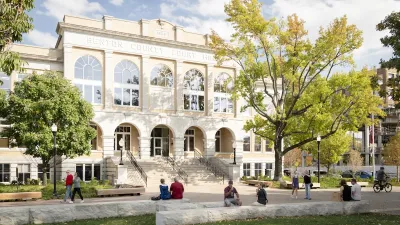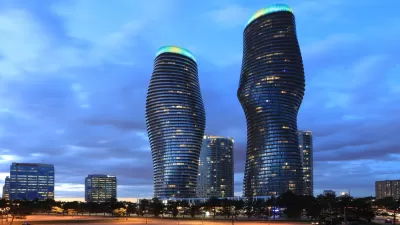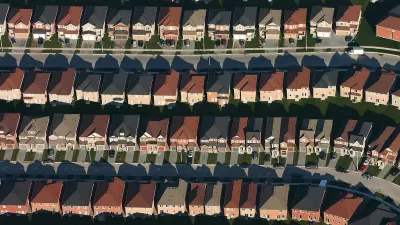Half a century of auto-oriented suburban development presents a massive challenge to planners hoping to create more sustainable and livable communities. In South Miami's Hometown district, Kaid Benfield finds a model for how to begin this transition.
"We need more and better models of suburban revitalization," writes Benfield, "and not just in growing affluent areas where investment dollars are relatively easy to come by. What about in places where it remains pragmatically important to accommodate drivers, and where change can occur only gradually, over time?"
"The South Miami Hometown district may be providing such a model," he notes. Though the area seems to have more assets than suburbs oriented around strip and big box retail, Benfield's before and after images demonstrate the district has made significant progress in enhancing the walkability of its auto-oriented environments.
FULL STORY: How a smarter streetscape is reviving a faded suburban district

Americans May Be Stuck — But Why?
Americans are moving a lot less than they once did, and that is a problem. While Yoni Applebaum, in his highly-publicized article Stuck, gets the reasons badly wrong, it's still important to ask: why are we moving so much less than before?

Using Old Oil and Gas Wells for Green Energy Storage
Penn State researchers have found that repurposing abandoned oil and gas wells for geothermal-assisted compressed-air energy storage can boost efficiency, reduce environmental risks, and support clean energy and job transitions.

Placekeeping: Setting a New Precedent for City Planners
How a preservation-based approach to redevelopment and urban design can prevent displacement and honor legacy communities.

San Francisco’s Muni Ridership Grew in 2024
The system saw its highest ridership since before the Covid-19 pandemic, but faces a severe budget shortage in the coming year.

Colorado Lawmakers Move to Protect BRT Funding
In the face of potential federal funding cuts, CDOT leaders reasserted their commitment to planned bus rapid transit projects.

Safe Streets Funding in Jeopardy
The Trump administration is specifically targeting bike infrastructure and other road safety projects in its funding cuts.
Urban Design for Planners 1: Software Tools
This six-course series explores essential urban design concepts using open source software and equips planners with the tools they need to participate fully in the urban design process.
Planning for Universal Design
Learn the tools for implementing Universal Design in planning regulations.
Heyer Gruel & Associates PA
City of Moreno Valley
Institute for Housing and Urban Development Studies (IHS)
City of Grandview
Harvard GSD Executive Education
Salt Lake City
NYU Wagner Graduate School of Public Service
City of Cambridge, Maryland




























